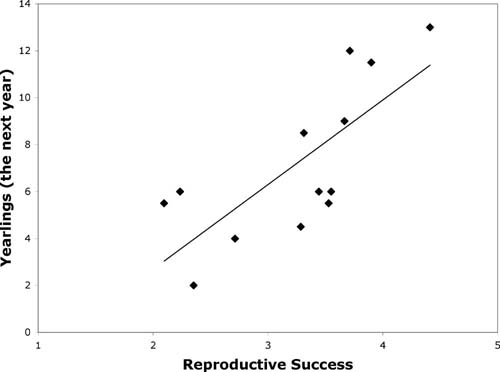Yearling Recruitment
| |

The number of yearlings
- or first time breeders - on the 64 ha study plot at Hubbard
Brook in relation to the reproductive success of warbler pairs
the previous year (yearling data were not available for 1999; data from Holmes, Rodenhouse, and Sillett).
|
So far we've shown that predators, food
and density are all factors that influence the reproductive success
of Black-throated Blue Warblers at Hubbard Brook. But does that really
make a difference to the total population size? Researchers testing
this question found out that it does. Reproductive success during
the breeding season in one year determines the number of yearlings
– or first time parents - on the study plot the following year.
This indicates that factors during the breeding season, particularly
those that lower reproductive success, play an important role in determining
the size of the warbler population.
Of course, environmental factors during
the migratory and wintering periods are also important (in fact, they
play a huge role in limiting survival of adults). However, this research
does emphasize that changes in the environment affect the reproductive
success and population size of Black-throated Blue Warblers.